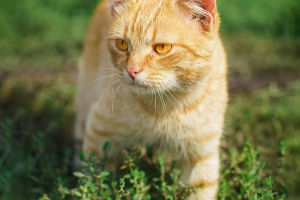The great spotted woodpecker is a bird in the Picidae family. Its most noticeable features are its black, white, and red feathers, and its habit of pecking into trees.
Biologists don't all agree on how many kinds of great spotted woodpeckers there are. Estimates range from 12 to 25 types. Examples include the white-backed woodpecker, stripe-breasted woodpecker, crimson-breasted woodpecker, and Sunda pygmy woodpecker.
Distribution and Habitat
It lives in both deciduous and coniferous forests, but it prefers mixed oak and beech forests.
Behavior
Why Do They Hammer?
Great spotted woodpeckers hammer for four main reasons:
1. They create cavities in trees for nesting.
2. They search for insects hiding under tree bark.
3. Males "drum" to attract female woodpeckers by rapidly pecking 10-15 times on a trunk or branch.
4. They defend their territory.
Why Don't They Get Headaches?
The great spotted woodpecker hammers constantly without needing painkillers or suffering brain concussion because it has a special suspension between its bill and skull. This unique feature protects the bird, allowing it to hammer all day long without issues.
Anatomy and Appearance
Great spotted woodpeckers have exceptionally long tongues. After pecking small holes into trees, they use their tongues to capture insects hidden inside. They also use their tongues to sip sweet nectar.
To protect themselves from wood chips while drumming, the woodpecker's nostrils are covered by tiny feathers. This prevents the chips from getting stuck in its nose.
Senses and Abilities
Woodpecker Anvils:
The great spotted woodpecker enjoys eating nuts and has a unique method for cracking them. Unlike other birds that hold nuts with their feet, the great spotted woodpecker wedges them into cracks or holes in trees. This prevents the nuts from rolling away, allowing the woodpecker to comfortably peck at them until it reaches the delicious treat inside. These holes or splits in trees are known as "anvils".
Flight Patterns:
All woodpeckers share the same flight pattern: they flap their wings three times and then glide.
The Woodpecker Cavity:
The nest of the great spotted woodpecker is typically located between 6 to 30 feet (2 to 10 meters) above the ground. It prefers old, rotting, or dead trees because their wood is softer. The entrance to the cavity is usually only about two inches (5-6 cm) wide.
While the woodpecker enjoys its self-made home, it typically doesn't stay there for more than a year. It moves on to create new cavities. The old nests are often used by other birds like tits, starlings, and sometimes even owls, provided the cavity is large enough.
Lykkers, do you find their behavior and adaptations intriguing? Share your thoughts and any experiences you've had observing these lively creatures in the wild! Let's chat about the amazing world of woodpeckers.


